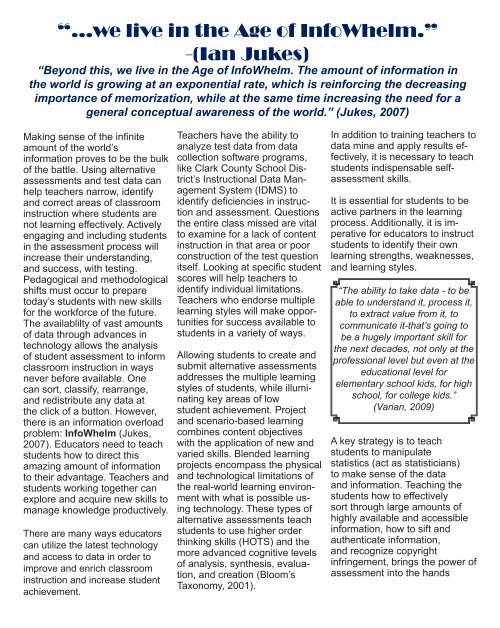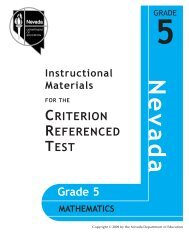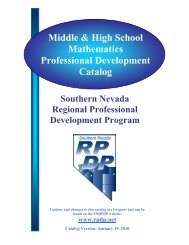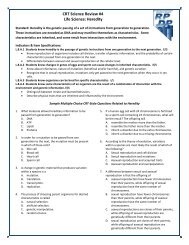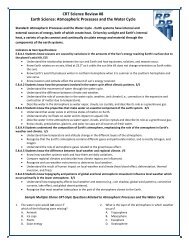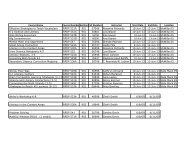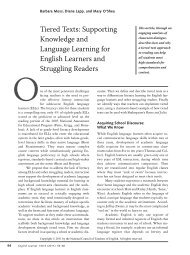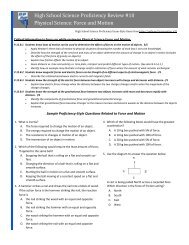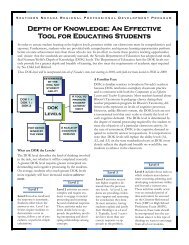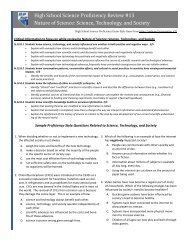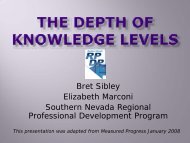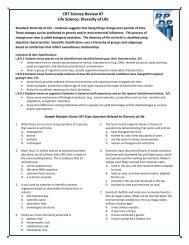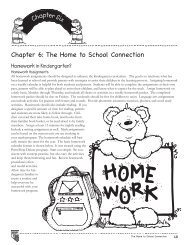Download - RPDP
Download - RPDP
Download - RPDP
You also want an ePaper? Increase the reach of your titles
YUMPU automatically turns print PDFs into web optimized ePapers that Google loves.
“…we live in the Age of InfoWhelm.”<br />
-(Ian Jukes)<br />
“Beyond this, we live in the Age of InfoWhelm. The amount of information in<br />
the world is growing at an exponential rate, which is reinforcing the decreasing<br />
importance of memorization, while at the same time increasing the need for a<br />
general conceptual awareness of the world.” (Jukes, 2007)<br />
Making sense of the infinite<br />
amount of the world’s<br />
information proves to be the bulk<br />
of the battle. Using alternative<br />
assessments and test data can<br />
help teachers narrow, identify<br />
and correct areas of classroom<br />
instruction where students are<br />
not learning effectively. Actively<br />
engaging and including students<br />
in the assessment process will<br />
increase their understanding,<br />
and success, with testing.<br />
Pedagogical and methodological<br />
shifts must occur to prepare<br />
today’s students with new skills<br />
for the workforce of the future.<br />
The availablilty of vast amounts<br />
of data through advances in<br />
technology allows the analysis<br />
of student assessment to inform<br />
classroom instruction in ways<br />
never before available. One<br />
can sort, classify, rearrange,<br />
and redistribute any data at<br />
the click of a button. However,<br />
there is an information overload<br />
problem: InfoWhelm (Jukes,<br />
2007). Educators need to teach<br />
students how to direct this<br />
amazing amount of information<br />
to their advantage. Teachers and<br />
students working together can<br />
explore and acquire new skills to<br />
manage knowledge productively.<br />
There are many ways educators<br />
can utilize the latest technology<br />
and access to data in order to<br />
improve and enrich classroom<br />
instruction and increase student<br />
achievement.<br />
Teachers have the ability to<br />
analyze test data from data<br />
collection software programs,<br />
like Clark County School District’s<br />
Instructional Data Management<br />
System (IDMS) to<br />
identify deficiencies in instruction<br />
and assessment. Questions<br />
the entire class missed are vital<br />
to examine for a lack of content<br />
instruction in that area or poor<br />
construction of the test question<br />
itself. Looking at specific student<br />
scores will help teachers to<br />
identify individual limitations.<br />
Teachers who endorse multiple<br />
learning styles will make opportunities<br />
for success available to<br />
students in a variety of ways.<br />
Allowing students to create and<br />
submit alternative assessments<br />
addresses the multiple learning<br />
styles of students, while illuminating<br />
key areas of low<br />
student achievement. Project<br />
and scenario-based learning<br />
combines content objectives<br />
with the application of new and<br />
varied skills. Blended learning<br />
projects encompass the physical<br />
and technological limitations of<br />
the real-world learning environment<br />
with what is possible using<br />
technology. These types of<br />
alternative assessments teach<br />
students to use higher order<br />
thinking skills (HOTS) and the<br />
more advanced cognitive levels<br />
of analysis, synthesis, evaluation,<br />
and creation (Bloom’s<br />
Taxonomy, 2001).<br />
In addition to training teachers to<br />
data mine and apply results effectively,<br />
it is necessary to teach<br />
students indispensable selfassessment<br />
skills.<br />
It is essential for students to be<br />
active partners in the learning<br />
process. Additionally, it is imperative<br />
for educators to instruct<br />
students to identify their own<br />
learning strengths, weaknesses,<br />
and learning styles.<br />
“The ability to take data - to be<br />
able to understand it, process it,<br />
to extract value from it, to<br />
communicate it-that’s going to<br />
be a hugely important skill for<br />
the next decades, not only at the<br />
professional level but even at the<br />
educational level for<br />
elementary school kids, for high<br />
school, for college kids.”<br />
(Varian, 2009)<br />
A key strategy is to teach<br />
students to manipulate<br />
statistics (act as statisticians)<br />
to make sense of the data<br />
and information. Teaching the<br />
students how to effectively<br />
sort through large amounts of<br />
highly available and accessible<br />
information, how to sift and<br />
authenticate information,<br />
and recognize copyright<br />
infringement, brings the power of<br />
assessment into the hands


